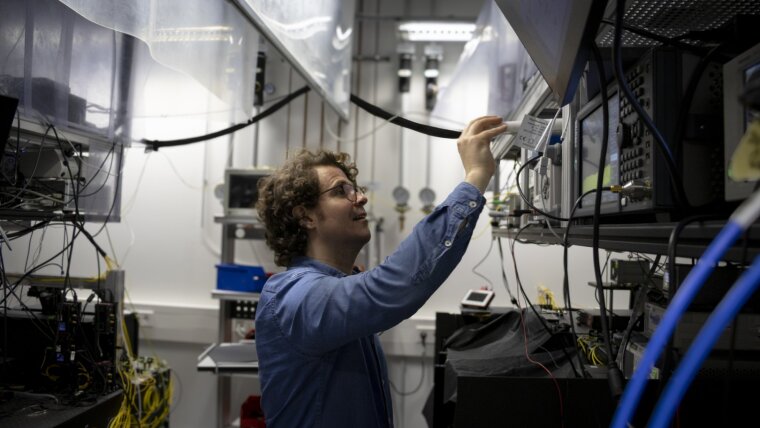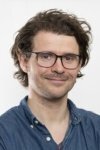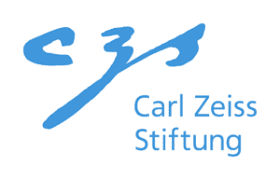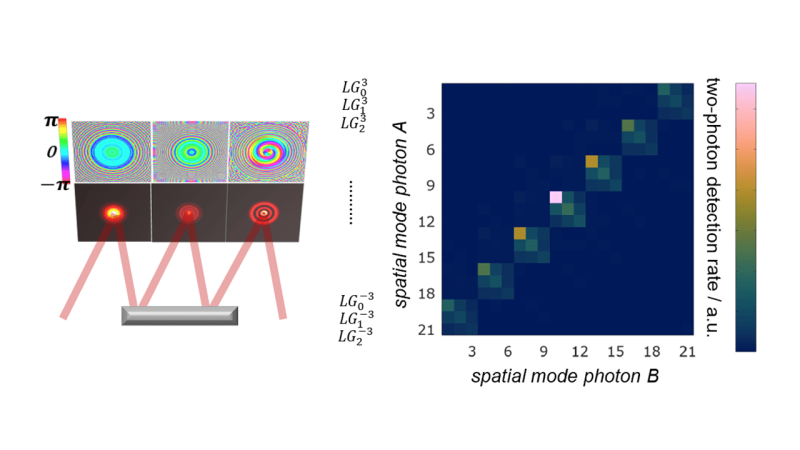
Prof. Fabian Steinlechner.
Image: Fraunhofer IOFProf. Dr. Fabian STEINLECHNER
Email: fabian.steinlechner@uni-jena.de
Phone: +49 3641 807 733
Carl-Zeiss-Stiftung Logo
Picture: Carl-Zeiss-Stiftung.Support by the CZS Center Photon
The Experimental Quantum Information professorship of Fabian Steinlechner is supported by the Carl-Zeiss-StiftungExternal link within its Carl-Zeiss-Stiftung Center for Quantum Photonics (CZS Center QPhoton). The Center is devoted to connect around 50 scientists at the Universities of Jena, Stuttgart and Ulm for a cross-disciplinary and cross-location platform for research and exchange in the field of quantum photonics.
Dr. Fabian Steinlechner received his PhD in 2015 from ICFO (Barcelona, Spain) where his doctoral research focused on the development of quantum light sources for applications in Space. As a postdoctoral fellow at the Institute for Quantum Optics and Quantum Information in Vienna, he contributed to the application of entangled photons in loophole-free tests of non-locality, quantum sensing, high-dimensional quantum information processing, and long-distance quantum communication in free-space and fiber links. In 2018, he established the “Quantum Communication Technology” group at Fraunhofer IOF via the Attract program. Since 2020 he is acting as group leader of the “Active and Adaptive Optics” group at IOF and the “Photonic Quantum Information” group at the Institute of Applied Physics, where he received a call to become full professor in 2023. The professorship is supported by the Carl-Zeiss-StiftungExternal link within its Carl-Zeiss-Stiftung Center for Quantum Photonics (CZS Center QPhoton)
The Steinlechner group conducts applied research in the field of quantum communication and photonic quantum information processing. Working in close collaboration with partners in academia and industry we aim to bridge the gap between fundamental quantum research and real-world applications. Our research focuses on novel quantum light sources for applications in quantum communication and sensing, efficient processing and detection schemes for high-dimensional quantum information, as well as scalable methods for the transmission of quantum states over long distances. A central goal is to incorporate photonic quantum technology in robust, field-deployable hardware systems that are suitable for integration in future quantum networks, long-distance atmospheric free-space links, and ultimately satellite-based quantum key distribution sytems.
Research Areas
Entangled photons are a key resource in quantum technology. They act as low-noise probes in imaging and sensing, as versatile information carriers in information processing and communication networks or as tamper-proof padlocks for cryptography. Dr. Steinlechner‘s research focuses on photonic technology for generating and manipulating complex quantum states of light for applications in remote sensing, long-range quantum communication, quantum information processing and distributed quantum networks. Research topics include:
- Tailoring the spatial- and spectral structure of biphotons generated via downconversion
- High-dimensional quantum information processing in the spatial and temporal domain
- Generating non-classical states of light for applications in ranging and remote sensing
- Quantum hardware and adaptive optics for satellitebased quantum communication
- Distributed quantum information processing enabled by high-dimensional photonic entanglement and hyperentanglement
Teaching Fields
- Quantum communication
Research Methods
The group utilizes modern experimental equipment including:
- Ultra-bright entangled photon sources
- Pulsed and cw-lasers at different wavelengths
- Wavelength-division multiplexing technology
- Single photon detectors and time-tagging electronics
- Ultra-fast electro-optic modulators and pulse shapers
- Spatial light modulators and adaptive optics
(left) Schematic representation of multi-plane light conversion for efficient manipulation and analysis of high-dimensional quantum states. (right) Spatial correlations of entangled photon pairs generated via parametric down conversion in a LaguerreGauss detection basis.
Graphic: Steinlechner research group, published.Recent Research Results
Recent research results include the demonstration of polarization-entangled photon sources with world record pair generation rates, the manipulation and detection of spatially-encoded [1-2] and frequency-encoded quantum states [3] for high-dimensional quantum information processing, novel approaches in quantum-enhanced sensing [4], as well as the exploitation of high-dimensional entanglement in noise-resilient quantum communication [5]. The group is also involved in collaborative efforts aimed at advancing quantum technology from laboratory to commercial application, in particular the design of quantum payloads for satellite deployment [6] and quantum communication systems for metropolitan free-space [7] and fiber networks [8].
[1] Baghdasaryan et al., Phys. Rev. A 101, 043844 (2020).
[2] Sephton et al., Optics Letters 44 (2019).
[3] Baghdasaryan et al., Phys. Rev. A 101, 043844 (2020).
[4] Chen et al., Phys. Rev. A 21 (2020).
[5] Chen et al., Npj Quantum Information 5 (2019).
[6] Ecker et al., Physical Review X, 9 (2019).
[7] Beckert et al., Free-Space Laser Communications XXXI, 10910 (2019).
[8] BMBF, Qunet-AlphaExternal link


